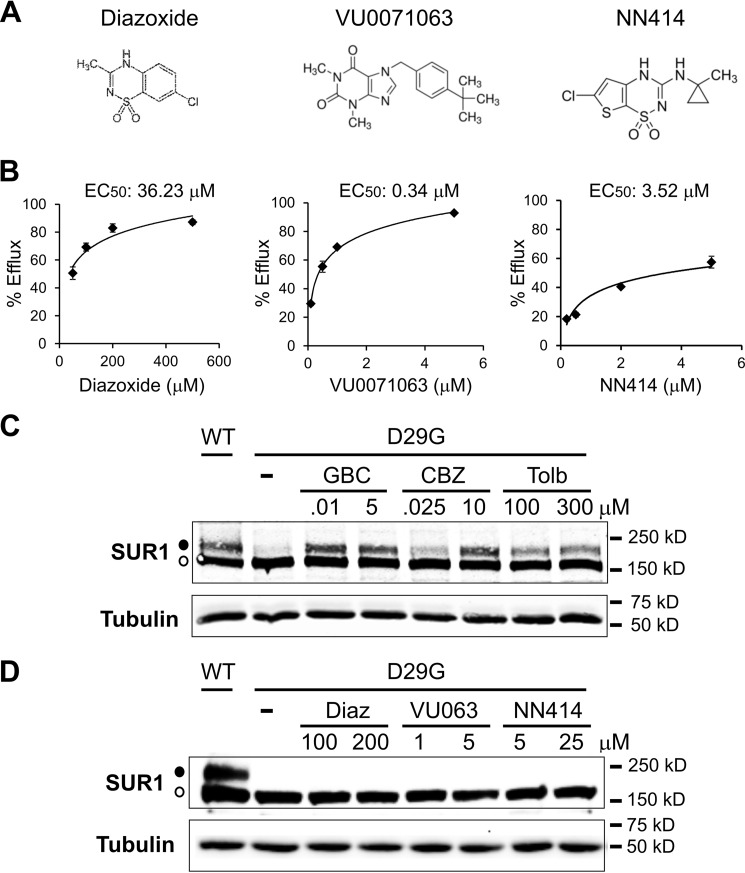FIGURE 2.
KATP channel openers do not correct trafficking defects caused by SUR1 TMD0 mutations. A, chemical structures of diazoxide, VU0071063, and NN414 (from PubChem). B, dose-response curves of KATP channel stimulation by diazoxide, VU0071063, and NN414 in 86Rb+ efflux assays as described under “Experimental Procedures.” Percentage of efflux during a 40-min incubation period was derived by subtracting background efflux in untransfected cells and normalized to that observed in cells incubated with metabolic inhibitors. EC50 values were calculated by fitting the dose-response curve with an exponential equation using Excel. Each data point represents the mean ± S.E. (error bars) of three independent measurements. Note that the error bars for some data points are smaller than the size of the symbols and therefore not visible. C, Western blots of SUR1 from COSm6 cells co-transfected with WT Kir6.2 and WT or D29G SUR1 cDNA (both human clones) and treated with 0.1% DMSO (−), 0.01 or 5 μm GBC, 0.025 or 10 μm CBZ, or 100 or 300 μm tolbutamide (Tolb) for 16 h. In DMSO-treated sample, only the core-glycosylated lower immature SUR1 band was observed (empty circle). All three channel inhibitors corrected the processing defect of the D29G mutant at both concentrations, as evident by the appearance of the upper mature SUR1 band (solid circle). Cells expressing WT channels were included for comparison. D, same as C except cells were treated with two different concentrations of diazoxide (Diaz), VU0071063 (VU063), or NN414, as indicated. None of the KATP channel openers tested corrected the processing defect of the D29G mutant SUR1.

